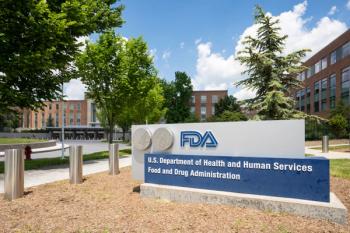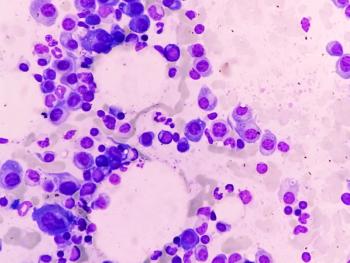
Cancer Disparities in Rural Areas: The Impact of Social Determinants of Health and Access Challenges
Nathan Vanderford, PhD, MBA speaks about barriers to cancer care access experienced by patients in rural communities.

Nathan Vanderford, PhD, MBA speaks about barriers to cancer care access experienced by patients in rural communities.

The call follows the FDA’s sudden removal of tirzepatide from the drug shortage list, preventing compounding pharmacies from providing the drug.

Utilizing data from the CHAMPION MG trial, investigators found that many patients had responded to ravulizumab and returned to daily activities within 2 weeks.

Historically, colchicine has been used primarily in the management of gout; however, in 2023, the FDA approved Lodoco, a newly marketed colchicine product, for the management of cardiovascular disease.

Congenital muscular dystrophy type 1a is a severe, early-onset condition that currently has no treatment, but MDL-101 may serve as a 1-time, durable treatment option.

Sara Rogers, PharmD, discusses the formation and goals of the Standardizing Laboratory Practices in Pharmacogenomics (STRIPE) initiative, which seeks to standardize pharmacogenomic practices and improve clinical decision-making by establishing consensus across all stakeholders.

Findings highlight the need for health care providers to continue to educate patients on the risk of scurvy, ensuring proper vitamin C intake.

Pharmacists are encouraged to leverage prescription drug monitoring programs connect patients to community-based resources to address the opioid crisis and pharmacy deserts.

Their expertise complements multidisciplinary teams in a variety of clinical settings.

Ryan Nelson, PharmD, discusses the STRIPE Annual Meeting and Consensus Workshop’s focus on unifying pharmacogenetic guidelines across major organizations, such as the FDA, European Medicines Agency, Clinical Pharmacogenetics Implementation Consortium, and National Comprehensive Cancer Network.

Had the pharmacy established safe opioid prescribing policies?

With the end of the PREP Act Provisions in sight, pharmacists should Reflect on their impact and plan to continue them.

Damage to a Baxter manufacturing plant in the aftermath of Hurricane Helene has led to significant IV fluid shortages throughout the country.

Treatment with valacyclovir for a year decreased the risk of new or worsening eye disease by 26%.

The FDA announces a Class II recall for the lot #220128, which were reported to contain the presence of nitrosamine.

Researchers discuss how interleukin-5 monoclonal antibodies are a promising approach for patients who have steroid-resistant asthma.

The CDC Advisory Committee on Immunization Practice voted to expand the recommendation, which includes Prevnar 20 and Capvaxive.

Despite self-reported improvements in cognitive function, neuropsychological tests showed little differences between 2 patient groups.

Stephanie White, PharmD, CSP, is presenting at the NCODA Fall Summit in Orlando, Florida.

The adjuvant therapy has demonstrated varied efficacy for patients.

Effectively educating patients about their medications and disease trajectory can improve adherence and outcomes.

These therapies are being investigated in earlier lines, with several new treatments in development.

Benjamin Brown of Standardizing Laboratory Practices in Pharmacogenomics (STRIPE) discusses his own experience as a patient with cancer and how consensus around pharmacogenomic practices can improve the lives of patients.

The agency does not intend to take action against the plaintiffs for the violation of the Federal Food, Drug, and Cosmetic Act, including the compounding of tirzepatide.

The approval marks Abrysvo as the first and only RSV vaccine designated for adults younger than 50 that are at increased risk for LRTD.

Benefits include reducing serious health consequences, such as hospitalization and death, as well as the economic burden on health systems due to influenza infection.

Pharmacists can educate patients about how to recognize unsafe online sources of medications and ensure patients are properly educate on how to administer their medications.


Higher doses of β-blockers are associated with better clinical outcomes in patient with heart failure.

Pharmacists will likely be the first contact for many affected patients, and they should be able to provide evidence-based advice on how to manage their infection.